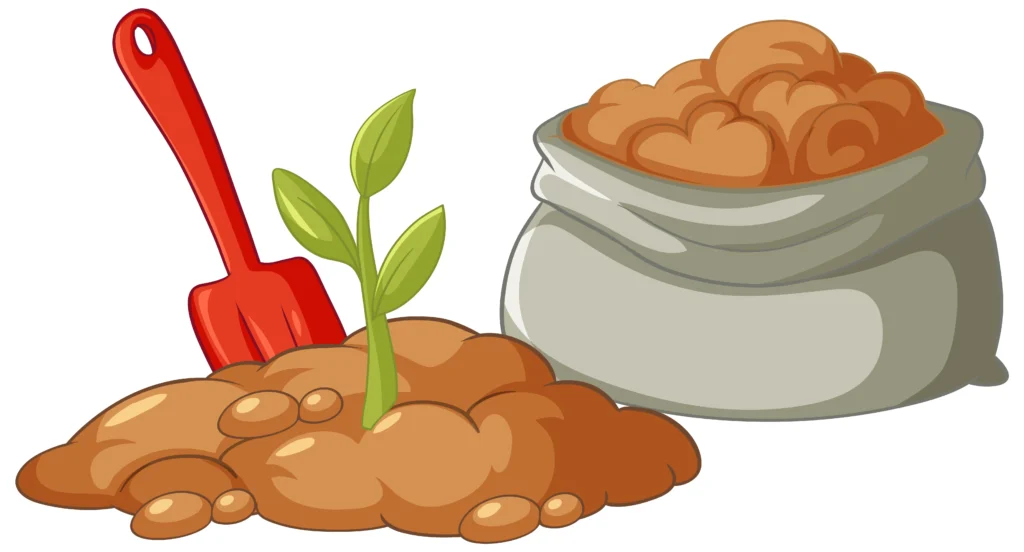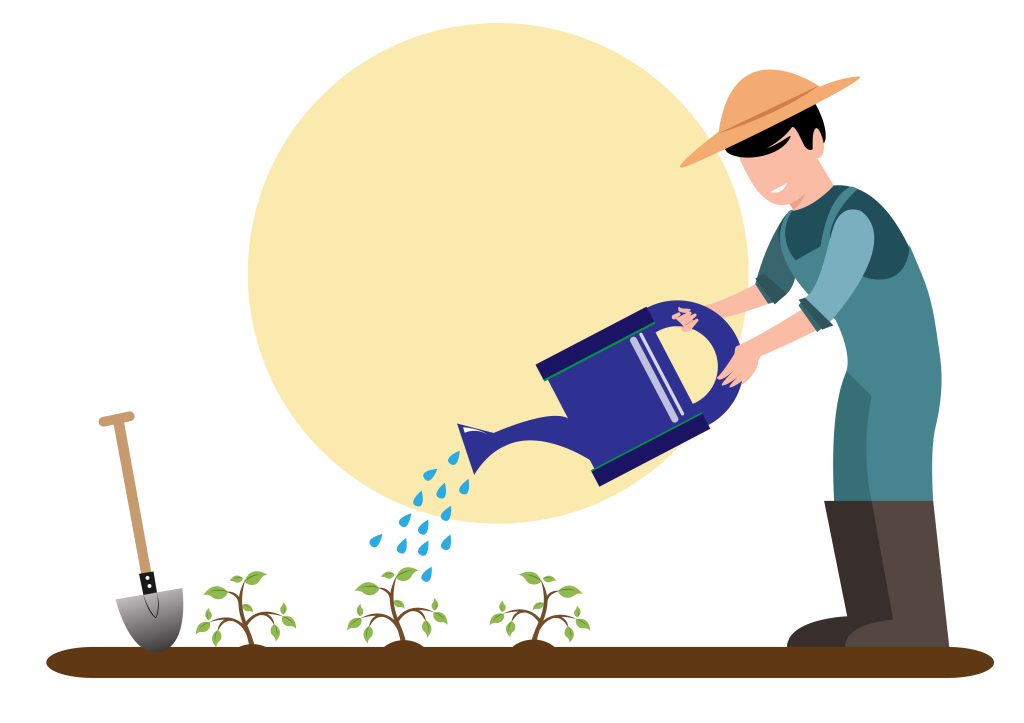Farmers need to water large land areas to grow plants and crops on farms and track how much water their fields need. Understanding how much water and what type of nutrients each plant needs helps farmers grow bigger crops and keep the planet healthy.
Water Runoff
When farmers water their crops, sometimes the water doesn’t all soak into the ground. Instead, the water runs off the land and carries soil, fertilizer, and debris into nearby rivers and lakes.
Water runoff acts just like a sponge with a bucket of water! Like the soil, the sponge can only absorb a certain amount of water to use once.

Soil Health
Farmers need to think about the soil on their farms, too! When the same plant is grown in one crop year after year, the soil can’t absorb as much water for the plants, increasing water runoff and making it harder to grow plants.
Farmers can help keep their soil healthy by planting different crops at different times, using compost, and allowing nature to regenerate the soil.

Watering Techniques
Sometimes, to ensure that the soil is full of water, farmers will water their crops until the field floods, letting extra water run off into nearby streams, which hurts the nearby ecosystem.
Each plant needs a different amount of water, sunlight, and nutrients to grow healthy! If a farmer waters all their plants the same way, some plants may get sick or grow more slowly.

THINK-PAIR-SHARE
How might a farmer flooding their fields or growing the same crop every year impact the ecosystem around a farm?